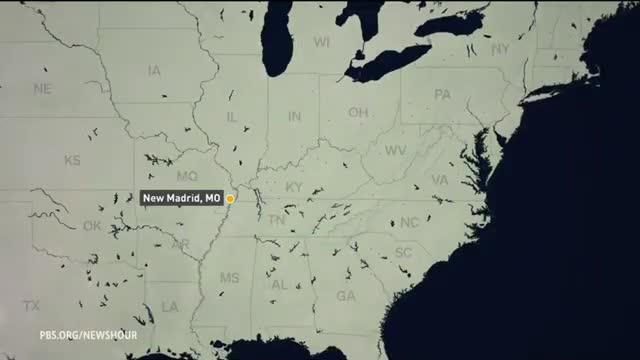Midwest faces earthquake threat with devastating potential
This article was created by AI summarizing key points discussed. AI makes mistakes, so for full details and context, please refer to the video of the full meeting. Please report any errors so we can fix them. Report an error »

A recent discussion highlighted the potential seismic risks facing the Mississippi and Ohio river valleys, particularly in light of historical earthquakes that reshaped the region nearly 200 years ago. The US Geological Survey has estimated a 25% to 40% chance of a significant earthquake, with a 7% to 10% probability of a repeat of the catastrophic 1811-1812 earthquakes.
Brian Houston, chair of the University of Missouri's Department of Public Health, emphasized the stark contrast between the past and present. The area, once sparsely populated, is now home to millions across five states, including major cities like Memphis, Tennessee, and Little Rock, Arkansas. Houston warned that a repeat of such seismic events could have devastating effects on infrastructure, homes, and businesses, given the extensive transportation networks that now crisscross the region.
The Mississippi River, a crucial economic artery for transporting coal and agricultural products, could face significant disruptions if an earthquake were to redirect its flow, as occurred in the past. Houston noted that the impact of such an event would not only be felt locally but could also hinder the vital connections between the eastern and western United States.
While the likelihood of a major earthquake remains relatively low, the region's history of severe weather, including annual flooding and tornadoes, underscores the need for preparedness and awareness among residents and local authorities. The discussion serves as a reminder of the ongoing geological risks and the importance of infrastructure resilience in the face of potential natural disasters.
Brian Houston, chair of the University of Missouri's Department of Public Health, emphasized the stark contrast between the past and present. The area, once sparsely populated, is now home to millions across five states, including major cities like Memphis, Tennessee, and Little Rock, Arkansas. Houston warned that a repeat of such seismic events could have devastating effects on infrastructure, homes, and businesses, given the extensive transportation networks that now crisscross the region.
The Mississippi River, a crucial economic artery for transporting coal and agricultural products, could face significant disruptions if an earthquake were to redirect its flow, as occurred in the past. Houston noted that the impact of such an event would not only be felt locally but could also hinder the vital connections between the eastern and western United States.
While the likelihood of a major earthquake remains relatively low, the region's history of severe weather, including annual flooding and tornadoes, underscores the need for preparedness and awareness among residents and local authorities. The discussion serves as a reminder of the ongoing geological risks and the importance of infrastructure resilience in the face of potential natural disasters.
View full meeting
This article is based on a recent meeting—watch the full video and explore the complete transcript for deeper insights into the discussion.
View full meeting